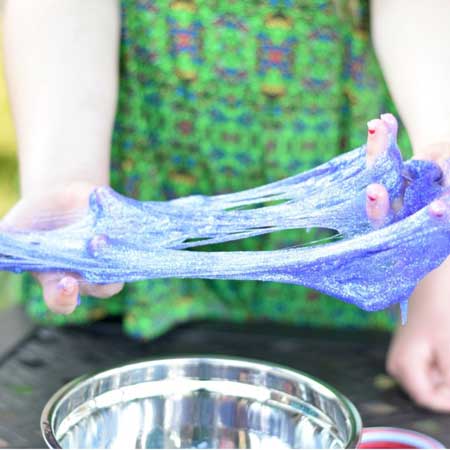
By Linda Conlin, Pro to Pro Managing Editor
You read that right. There’s a connection between contact lenses and that sticky, stretchy creation that’s all the rage with kids. It seems that contact lens solution is a key ingredient for homemade slime. Who figured that one out? I couldn’t find the responsible party, but a little of the history and chemistry behind slime will give some insight as to why it works.
Its all about polymers. Polymers are identical monomers, molecules that can react with other molecules, chemically bonded into very long, separate chains. Polymers can form thick liquids, which in the presence of an activator, will cross-link or bond the chains together, the principle behind slime. The science of polymers began in the early 1900s with studies of natural rubber that led to the development of synthetic polymers. In 1943, James Wright attempted to create a synthetic rubber polymer for the US effort in World War II. He deemed the substance a failure until toymaker Peter Hodgson discovered it and marketed it as Silly Putty in 1950. Slime as we know it today is the 1976 creation by the Mattel Toy Company made from guar gum and sodium tetraborate.
Recently, parents, teachers and other creative types are using homemade slime to teach kids about science while they have fun. School glue like Elmer’s Glue is made up of polyvinyl alcohol (PVA) polymers. Activators like boric acid, a derivative of borax, and sodium borate will cross-link the PVA polymers. Some “recipes” for homemade slime use Borax, which is sodium tetraborate (remember Mattel?) as an activator, but because it can cause skin irritation, the search was on for a gentler activator. Someone realized that some contact lens solutions and eye drops contain boric acid and sodium borate. Well, if you can use it on something that goes in your eye, it must be gentler. And so new recipes were born.
Of course, in the name of research, I had to try it. Here’s the recipe I used.
6 oz Elmer’s Glue (clear or white)
½ tsp baking soda
1 Tbs contact lens solution or eye drops containing boric acid and sodium borate
1 Tbs water (add more for stretchier slime)
Optional: A drop of food coloring and/or glitter
Mix the glue and baking soda in a bowl. Add water, food coloring and glitter. Add the contact lens solution and mix until it thickens. Take out the slime and knead it to the desired consistency.
This was a quick process with easy cleanup. The slime can be kept in a Ziplock bag or closed container for at least a week. (Glue hardens because water evaporates, but the solution slows the evaporation.) I made mine five days ago, and it’s still nice and stretchy. This may be a “fun fact” for your contact lens patients, and if you don’t have small children around, it makes a great stress ball. Have fun!
Learn about another connection between kids and contacts with our CE, Kids, Contacts and Quality of Life at 2020mag.com/ce.












